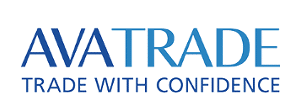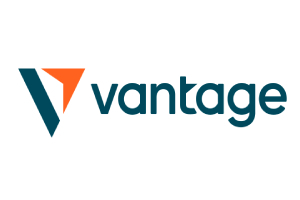Don’t invest unless you’re prepared to lose all the money you invest. This is a high-risk investment and you are unlikely to be protected if something goes wrong. Take 2 minutes to learn more
The main points are often missed by many people. While cryptocurrency makes headlines, the mainstay of real economies is still oil, gold, wheat, and copper. That is why including commodities in your portfolio is still important for its long-term success.
What Is Commodities Trading and How Does It Work?
If you trade raw materials, you are guessing about the future value of oil, gold, coffee, and wheat. Generally, people use futures, spot trades, or ETFs to access these assets without needing to handle the goods themselves. Most people taking part in futures want to earn profits from changes in prices and generally use leverage to increase their exposure.
These markets typically revolve around two major sectors: energy and metals (like oil, gas, and industrial minerals) on one side and farm-grown goods (like wheat, soy, or coffee) on the other. The reason this asset class is so difficult is that it is easily affected by changes in the climate, geopolitical events, what consumers want, and currency exchange rates. Leading the industry involves constantly tracking worldwide changes and following a clear and steady approach.
Stock prices depend on earnings and what CEOs say, but commodities are mostly influenced by transportation systems and consumption patterns worldwide. Understanding macroeconomic trends, inventory reports, and weather data becomes critical.
Success in this space requires more than luck—it demands discipline, timing, and constant analysis of real-world conditions beyond charts.
Key Factors to Consider Before Trading Commodities
Entering the commodities market without preparation is risky. Before you start, ask yourself: what’s my tolerance for volatility? Can I read market news critically? Do I have the tools to manage leverage responsibly?
One of the biggest mistakes beginners make is underestimating margin requirements. Leverage amplifies gains and losses. A small movement in crude oil prices can liquidate an entire position if your margin is thin. That’s why money management isn’t just helpful—it’s necessary.
Next, consider diversification. Putting all your capital into a single commodity (like gold) might feel safe, but it’s not. Diversify across sectors or hedge using inverse ETFs.
Always check the liquidity of the contract you’re trading. Thin liquidity leads to slippage and wider spreads—hidden costs that eat into your bottom line. Not every commodity is suited for retail traders. Some are better left to professionals who can handle illiquid markets with institutional tools.
Choosing the Right Tools and Platform
The tools you have are what help you to determine which trades to make. For commodities trading, that means more than just candlestick charts. You’ll need access to live news feeds, economic calendars, global inventory reports, and charting with future data.
Beyond tools, your platform should be stable during volatile hours—especially around U.S. market openings, OPEC announcements, or agricultural reports. If the platform freezes when WTI drops $5 in a minute, it’s not worth using.
Look for platforms that support multiple order types, like stop limit or trailing stop. This helps you lock in gains or limit damage without being glued to your screen. Also, test mobile versions if you plan to monitor trades on the go.
One well-regarded platform for trading commodities includes these features while also offering low commissions and real-time futures access—an essential combination for traders looking to scale responsibly.
Strategies That Actually Work in Commodities Trading
You don’t need a PhD to trade commodities—but you do need a system. Jumping in based on headlines or hunches won’t work over time.
One proven approach is seasonal trading. Agricultural commodities follow growing and harvest cycles. Energy prices often rise in winter and summer. By studying seasonality, you can anticipate moves rather than react to them.
Another is correlation-based trading. Gold and the U.S. dollar often move in inverse relation. Crude oil and the Canadian dollar (CAD) have a historical relationship. Use these insights to hedge or confirm signals.
Don’t forget risk management. Always set a limit for your worst possible loss, and don’t go beyond it. Many traders in commodities use the rule that each trade should be less than 1–2% of your total investment.
Keep a journal. Track why you entered a trade, what you felt, and what happened. Over time, this reflection sharpens instincts and reveals blind spots—something even the best software can’t do.
Pitfalls to Avoid and Lessons from Real Traders
The biggest trap in commodities trading is overconfidence. Traders see one good gold trade and think they’ve cracked the market. Then they over-leverage on natural gas—and wipe out gains.
Markets move fast, and you’ll be wrong often. Accept it. The goal isn’t to be right 100% of the time—it’s to manage losses when you’re wrong and ride the trends when you’re right.
Also, avoid ‘news chasing’. By the time a price spike hits mainstream media, it’s probably too late. Smart traders act before the news, not after.
Another common mistake is ignoring fees. Holding futures overnight, rollover costs, platform commissions—these add up. What appeared to be a winning trade on paper may break even after accounting for real costs.
Patience is underrated. Sometimes, the best trade is no trade. Good traders sit out more than they act.
Conclusion: Commodities Trading Rewards the Prepared, Not the Lucky
Commodities trading isn’t for gamblers. It’s for focused, adaptable thinkers who read beyond charts and follow real-world events. Choosing the right market, managing risk, and using a reliable platform are the pillars of success.
The best traders treat this as a business—not a bet. They build systems, use discipline, and continuously learn. If you bring the same approach, commodities markets can reward you—not with hype, but with real, measurable results.
- Broker
- Min Deposit
- Score
- Visit Broker
- Award-winning Cryptocurrency trading platform
- $100 minimum deposit,
- FCA & Cysec regulated
- 20% welcome bonus of upto $10,000
- Minimum deposit $100
- Verify your account before the bonus is credited
- Fund Moneta Markets account with a minimum of $250
- Opt in using the form to claim your 50% deposit bonus
Learn to Trade
Never Miss A Trade Again

Signal Notification
Real-time signal notifications whenever a signal is opened, closes or Updated

Get Alerts
Immediate alerts to your email and mobile phone.

Entry Price Levels
Entry price level for every signal Just choose one of our Top Brokers in the list above to get all this free.



